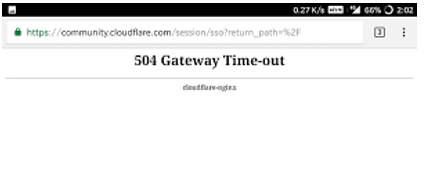

The error code 401 (Unauthorized) occurs when the request is trying to access the resources that were not authenticated or authenticated correctly. It could be a bad request due to an error when manually forming HTTP requests, for example, incorrect usage of The web browser sending the request may be faulty/buggy. Cleaning the browser cookies and cache may solve the issue. The site-related cookies may be corrupted. Let’s have a look at potential sources of the bad syntaxes: It describes that the HTTP request sent to the server contains invalid syntax. The error code 400 indicates a Bad Request.

This guide should serve as a useful guideline in figuring out the source of the issue.
#Http error codes software#
It means that a particular status code is returned on how the server software is handling the particular error. The programs are implementing this standard based on how they handle the requests. Checking these logs can reveal useful info. For example, popular web servers like Apache and Nginx produce filesĮrror. The server log holds detailed info about how the server is handling the requests. When using a web browser to test the server, it’s a good practice to refresh the browser after making any change to the server. Irrespective of the error, here are some general troubleshooting tips that you should test out first whenever facing any HTTP error code: Server errors (HTTP status code 500 to 599), on the other hand, result when the server is aware that an error has occurred or is not able to process the request. It can help determine if a potential issue can be deployed on the server-side.

Although the errors are mostly client-related, it’s useful to know which code a user is experiencing. Client vs Server ErrorsĮrror codes 400 to 499 result from the user client (a web browser or any HTTP client). In addition, this tutorial will discuss potential causes and solutions. Numerous situations can lead the webserver to respond with a particular code. In this guide, we will discuss some of the most common HTTP error codes that everyone encounters (4xx and 5xx), from the perspective of a system admin. It means that the server failed to process a valid request. Server error responses: Value ranges from 500 to 599. Either the request contains incorrect syntaxes or it can’t be fulfilled. It means that further actions are necessary to complete the request.Ĭlient error responses: Value ranges from 400 to 499. Redirection messages: Value ranges from 300 to 399. It says that the action was received, understood, and accepted successfully. Successful responses: Value ranges from 200 to 299. It describes that the request was received and being processed. Information responses: Value ranges from 100 to 199. Based on the first digit, HTTP codes are divided into five categories: These codes are three-digit long integers, each signifying various statuses. In many situations, these codes are important to diagnose various server/client issues. Instead, it’s a report of how things went after receiving the HTTP request. It doesn’t contain any actual site content. These codes are short notes from the server describing the situation. We don't capture or store any data about the requests you make.Any web server receiving an HTTP request is responded to with an HTTP status code.
#Http error codes full#
Or, send us a pull request to add full support for a new code. If you send any other three digit number that's not in that list, we'll return it too. If you need to enable CORS, all endpoints have been configured to allow all origins, headers, and HTTP methods. Insufficient Storage 508 Loop Detected 510 Not Extended 511 Here are all the codes we support (and any special notes): 100 If you host it yourself in IIS/IIS Express you won't have that limit. *When using the hosted instance the timeout is actually 230 seconds, which is the max timeout allowed by an Azure App Service (see this thread post). If you want a delay on the response add a query string of sleep (the time in ms, max 5 minutes*), like this: Then we'll JSON encode the response and send the Content-Type header accordingly. To get a JSON response back, you need to ensure that the Accept header contains 'application/json'. Just add the status code you want to the URL, like this: It's useful for testing how your own scripts deal with varying responses. This is a super simple service for generating different HTTP codes.


 0 kommentar(er)
0 kommentar(er)
